Nature Positive / Carbon Negative: Duke Farms සමඟ සම්මුඛ සාකච්ඡාවක්
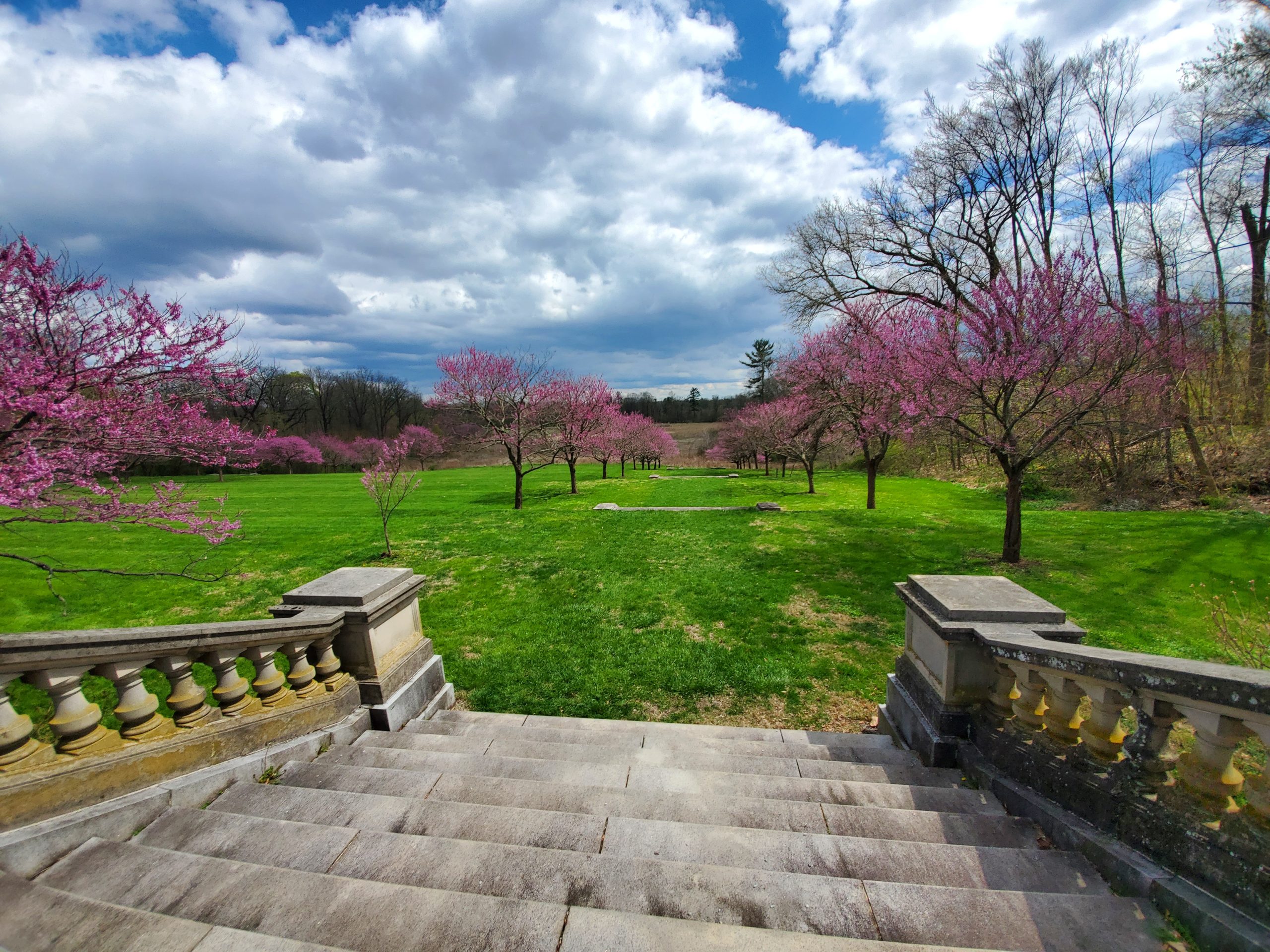
Climate Toolkit හට නිව් ජර්සි හි Doris Duke පදනමේ මධ්යස්ථානයක් වන Duke Farms හි නියෝජ්ය විධායක අධ්යක්ෂ Jon Wagar සමඟ අසුන් ගෙන දේශගුණික තිරසාරත්වය සඳහා වූ ඔවුන්ගේ ද්වි-පාර්ශ්වික ප්රවේශය ගැඹුරින් හෑරීමට අවස්ථාව ලැබුණි.
දේශගුණික මෙවලම් කට්ටලය:
ඩියුක් ෆාම්ස් දේශගුණික ක්ෂේත්රය තුළ කරන දේ පිළිබඳ ඉහළ මට්ටමේ දර්ශනයක් අපට ලබා දෙන්න.
ජෝන් වාගර්:
අපි මෙහි Duke Farms හි කරන දේ දේශගුණික තිරසාර ආස්ථානයකින් සකස් කරන එක් ක්රමයක් නම් “සොබාදහම ධනාත්මක, කාබන් ඍණ.”
මෙය අප වැනි තවත් බොහෝ උද්යාන සහ සංස්කෘතික ආයතනවලට අදාළ වේ යැයි මම සිතමි - සැබවින්ම තිරසාරත්වය දෙස ගොඩනඟන ලද පාරිසරික දෘෂ්ටිකෝණයකින් පමණක් නොව, ස්වභාවය සහ අන්යෝන්ය දෘෂ්ටිකෝණයකින් බලන විට. රොබින් වෝල් කිමරර් ඇගේ පොතේ මෙම දර්ශනය ගැන කතා කරයි Sweetgrass ෙගත්තම්. අපට ඩියුක් ෆාම්ස් හි අක්කර 2,700 ක් ඇති නිසා, අපගේ ඉඩම ස්වභාවධර්මයේ ධනාත්මක සහ කාබන් ඍණ යන දෙඅංශයෙන්ම කළමනාකරණය කළ යුතුය. ඉතින්, එයින් අදහස් කරන්නේ වායුගෝලයෙන් කාබන් ඩයොක්සයිඩ් ඉවත් කළ හැකි ඉඩම් කළමනාකරණය සහ පාරිසරික ප්රතිසංස්කරණ කටයුතු සිදු කරන අතරම අපගේ විමෝචනය බිංදුවට ගෙන යාමයි. දේශගුණය අර්බුදයට ලක්ව ඇති නිසා අපි ඒ ගැන සිතීම වැදගත් ය. අපි අවශ්යයි ඒ ගැන මෙහෙම හිතන්න. කාරණය නම්, අපට දැන් මෙන් වාතයේ කාබන් ඩයොක්සයිඩ් ඕනෑවට වඩා ඇති අතර, කාබන් ඉවත් කර සොබාදහම රැකබලා ගනිමින් විමෝචනය බිංදුවට ගෙන යා යුතුය.
දේශගුණික මෙවලම් කට්ටලය:
Duke Farms දේශගුණික තිරසාරත්වය කරා ගමන ආරම්භ කළේ කෙසේද?
ජෝන් වාගර්:
අප සතුව ඒ පිරිසිදු බලශක්ති සැලැස්ම හරිතාගාර වායූන් අඩු කිරීම සඳහා නිව් ජර්සි ප්රාන්ත ඉලක්ක සමඟ සමපාත වන බව අපි 2016 සිට අනුගමනය කරමින් සිටිමු. පැරිස් ගිවිසුම. අපි බලශක්ති විගණන සමඟින් ආරම්භ කර එය සාක්ෂාත් කර ගන්නේ කෙසේද යන්න ප්රශස්ත කිරීම සඳහා විශාල කාබන් පියසටහන් විශ්ලේෂණයක් කළෙමු. එම විග්රහයෙන් මතු වූ ප්රධාන උපාය මාර්ග වනුයේ: 1) සියල්ල විද්යුත්කරණය කිරීම, 2) අපගේ විදුලිය හරිතකරණය කිරීම සහ 3) අපගේ විදුලි පද්ධතිය වඩාත් ඔරොත්තු දීමේ හැකියාව ඇති කිරීම. එයින් සිදු වන්නේ අපගේ වර්තමාන බලශක්ති අවශ්යතාවයෙන් සියයට සියයක්ම සපුරාලන බැටරි ගබඩාවක් සහිත නව සූර්ය අරාවක් ගොඩනැගීමයි.
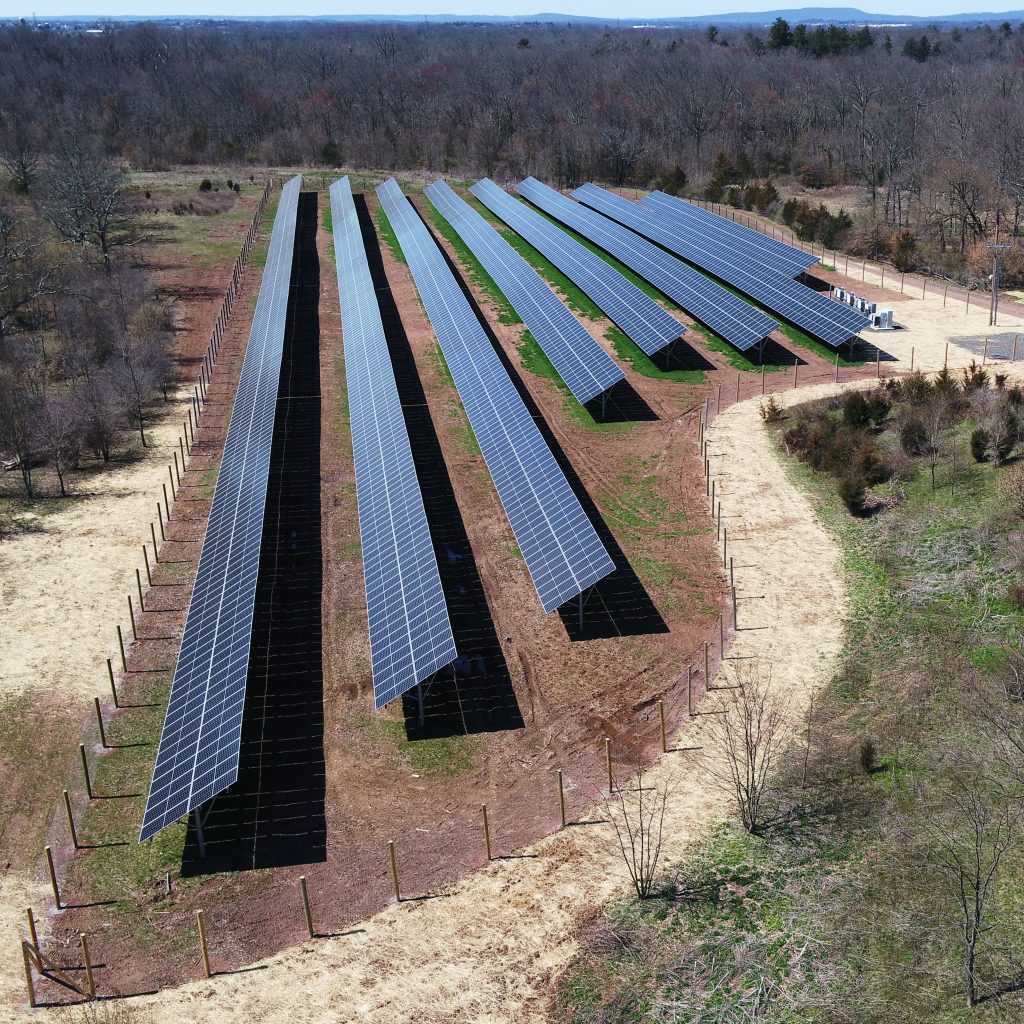
ජෝන් වාගර්:
ඒ අතරම, අපි අපගේ වාහන සහ උපකරණ විද්යුත්කරණය කරමින් සිටිමු, සහ වැදගත් ලෙස ඊසානදිග සඳහා, අපගේ අභ්යවකාශ උණුසුම. අපට කැම්පස් හි පැරණි නිවාස රාශියක් ඇත - බොහෝ විට තාපය අවශ්ය ගොඩනැගිලි 30 ක් පමණ ඇත. ඒවායින් බොහොමයක් ස්වාභාවික වායු හෝ තාප පොම්ප බවට පරිවර්තනය කිරීම පමණි. තරමක් සරලයි. අමාරුම ගොඩනැගිල්ල අපේ හරිතාගාරයයි, එය ඇත්තෙන්ම සිසිල් පැරණි Lord & Burnham පහසුකමකි. වර්ග අඩි 28,000ක් පමණ වන අපගේ උඩවැඩියා පරාසය සහ නිවර්තන එකතුව, වඩාත් ප්රසිද්ධ සංරක්ෂණාගාර රාශියකට සාපේක්ෂව කුඩා බවක් හැඟේ, නමුත් එය අපගේ ප්රධාන සංරක්ෂණාගාරය වන අතර එය බලශක්ති තීව්ර වේ. අපි එතැන අභියෝගවලට මුහුණ දෙනවා. මේ මොහොතේ අපට අවශ්ය උෂ්ණත්වය පවත්වා ගත හැකි තවමත් විදුලි උණුසුම (තාප පොම්ප) ඔවුන් සතුව නොමැත. ඒ නිසා අපි බලන්නේ අතුරු විසඳුමක්.
දේශගුණික මෙවලම් කට්ටලය:
ඔබ ක්ෂිතිජයේ හොඳ විසඳුම් සොයනවාද?
ජෝන් වාගර්:
අපි දැනට හඳුන්වන දේ ඇත ඝනීභවන බොයිලේරු මොඩියුලේට් කිරීම මෙන්න කැම්පස් එකේ. ඒවා 98 – 99% කාර්යක්ෂමයි – එබැවින් ඔබ ස්වභාවික වායුව දහනය කිරීමට යන්නේ නම්, ඔබ එය දහනය කළ යුත්තේ මෙයයි, මම හිතන්නේ. මෙම ස්වාභාවික ගෑස් බොයිලේරු වල කාබන් පියසටහන දැඩි ලෙස අඩු කිරීම සඳහා, අපි විදුලි ජල උණුසුම සමඟ එය අතිරේක කරන්නෙමු. ඉතින්, අපි දැන් යමක් සැලසුම් කරමින් සිටින්නේ අපගේ හරිත විදුලි ජාලයේ බර වැඩි කරන අතරම බොයිලේරු වල බර අඩු කළ හැකි දෙයක්. ඉතින් නැවතත්, මෙම අතුරු විසඳුම, අපි දැන් එය ඉංජිනේරුකරණය කරමින් සිටිමු. අපට එය කළ හැකි යැයි අපි සිතමු, නමුත් එය කැඩීමට දැඩි ගෙඩියකි. මම හිතන්නේ හරිතාගාර ඇති බොහෝ උද්භිද උද්යාන සමඟ, කාබන් පියසටහන් ඉදිරිදර්ශනයකින් සොයා ගැනීමට අපහසුම දෙය එය වනු ඇත. තව දුරටත් පහතට, බලාපොරොත්තු වන පරිදි වසර කිහිපයකින්, සංකීර්ණ ගෘහස්ථ උද්යාන විද්යා පද්ධතියකට අවශ්ය උෂ්ණත්වය පවත්වා ගත හැකි තාප පොම්ප ඔවුන් සතුව ඇත.
දේශගුණික මෙවලම් කට්ටලය:
අපි Phipps හි හරියටම එකම තත්වයක සිටිමු. අපගේ පහළ මණ්ඩපය අති නවීන තිරසාර වේ, නමුත් ඓතිහාසික ලෝඩ් සහ බර්න්හැම් සංරක්ෂණාගාරයක් වන අපගේ ඉහළ මණ්ඩපය තිරසාර නොවන අතර, අපි තාප පොම්ප සහ භූ තාප වැනි විවිධ විකල්ප සොයමින් සිටිමු.
ජෝන් වාගර්:
හරිතාගාර සහ සංරක්ෂණාගාර සමඟ, ස්වභාවික වායු උපස්ථ සඳහා සෑම විටම අවශ්ය විය හැකිය. එහෙමත් නැත්නම් කුණු ගොඩවල් වලින් එන මීතේන් වගේ ජෛව ඉන්ධනයක් වෙන්න පුළුවන්. නමුත් අප සතුව ඇති එකතු කිරීම් අනුව; අපි සුපිරි ඔරොත්තු දිය යුතුයි. ඒක හරියට ජෙනරේටර් කිහිපයක් තියෙන රෝහලක් වගේ. අපට උද්යාන විද්යාව සහ ශාක සංරක්ෂණ දෘෂ්ටිකෝණයෙන් මෙම ප්රශ්නය හරහා සිතීමට සිදුවේ. අපි ඇත්තටම මෙම පද්ධති ප්රත්යස්ථ බවට පත් කළ යුතු අතර, සමහර විට ඉන්ධන සඳහා භූමිකාවක් තිබිය හැකි නමුත් ෆොසිල ඉන්ධන නොවේ.
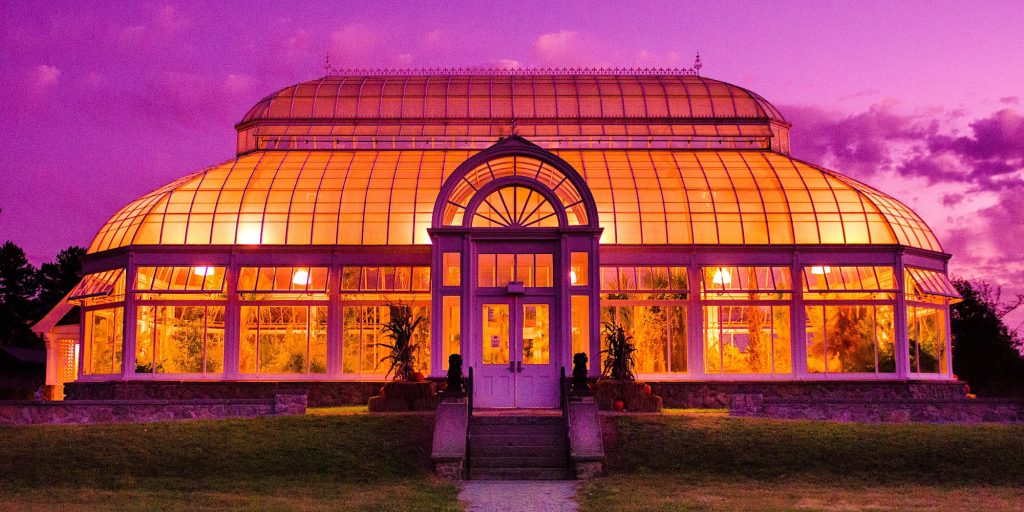
දේශගුණික මෙවලම් කට්ටලය:
ඔබ ඔබේ බලශක්ති විගණනය නිවස තුළම සිදු කළාද නැතහොත් විශ්ලේෂණය සිදු කිරීමට සමාගමක් කුලියට ගත්තාද?
ජෝන් වාගර්:
ඇත්ත වශයෙන්ම එය දෙකම විය. බලශක්ති විගණන පැවැත්වීම සඳහා සමාගම් කුලියට ගැනීම සඳහා පළාත් පාලන සහ ලාභ නොලබන ආයතන සඳහා ගෙවිය යුතු දිරිගැන්වීමක් අපගේ මහජන උපයෝගිතා කොමිසමට තිබූ නිසා අපි සමාගමක් කුලියට ගත්තෙමු. සහ බොහෝ ප්රාන්තවල මෙය තිබේ. ඉංජිනේරු සමාගමක් විගණනය සිදු කළ නමුත් අපට එය පරිවර්තනය කිරීමට සහ එය ප්රශස්ත කිරීමට උදවු අවශ්ය විය. එබැවින්, අපි අපගේ බලශක්ති උපදේශක සමඟ වැඩ කළ අතර අපට සොයාගත් එක් සිත්ගන්නා කරුණක් නම්, ජනේල ප්රතිස්ථාපනය කරනවාට වඩා උණුසුම විද්යුත්කරණය කිරීමට ආයෝජනය කිරීම වඩා හොඳය. ඔබ සිතන්නේ කාර්යක්ෂමතාවය සහ සංරක්ෂණය ඔබ සැම විටම ඔබේ මුදල් වත් කළ යුතු ස්ථානයයි. නමුත් මෙම නඩුවේදී නොවේ. මෙම පැරණි නිවාස සඳහා නව ජනේල සඳහා $15,000 වියදම් කරනවා වෙනුවට, අපි ඒ වෙනුවට නව $15,000 තාප පොම්ප පද්ධතියක් තැබුවෙමු. පිරිවැය දෘෂ්ටිකෝණයෙන් බලන විට එය මිලෙන් අඩුය. තවද, කාබන් දෘෂ්ටිකෝණයකින් ද: අපට 1890 ගණන්වල පැරණි කවුළු ඇත, ඒවා ලස්සනයි, නමුත් ඒවා පෙරනයක් මෙන් කාන්දු වේ. ඒවා ප්රතිස්ථාපනය කිරීම සඳහා, අපි නිෂ්පාදනය, ගෑස්, ප්රවාහනය වැනි විමෝචන විෂය පථය ගැන සිතා බැලිය යුතුය - දැන් කාර්යක්ෂමතාව හෝ සංරක්ෂණයට වඩා තිරසාර බලශක්තිය සහ විද්යුත්කරණය සඳහා ආයෝජනය කිරීම වඩාත් අර්ථවත් කරයි.
ඊට පස්සේ අපි අපේ බලශක්ති උපදේශකයෙක් ඇවිත් අපේ උපයෝගිතා බිල්පත් බලලා වැඩිපුර බලශක්ති පරිභෝජනය සිදුවන ආකෘතියක් නිර්මාණය කළා, අපි මෙය විෂය පථය 1 සහ විෂය පථය 2 විමෝචනය සඳහා කාබන් පියසටහනක් බවට පරිවර්තනය කළා. හරි දැන් අපි ඒ මොඩල් එක අරගෙන ඒකට දානවා Microsoft Power BI. මයික්රොසොෆ්ට් BI හට මාසයෙන් මාසය පදනමින් සිදුවන්නේ කුමක්දැයි බැලීමට පහසුකම් සහිත පුද්ගලයින් සඳහා තත්ය කාලීන උපකරණ පුවරුවක් නිර්මාණය කිරීමට හැකි වනු ඇත. ඉන්පසුව අපගේ තථ්ය කාලීන කාබන් පියසටහන කුමක්දැයි පෙන්වන අධ්යාපනික උපකරණ පුවරුවක් මහජනතාවට ඇත. ඉන්පසු ප්රමිතික දෙස බලන විධායක උපකරණ පුවරුවක්. ඉතින් BI එකෙන් කරන්නේ මේ මොඩල් එක අරන් ලයිව් කරන එක.
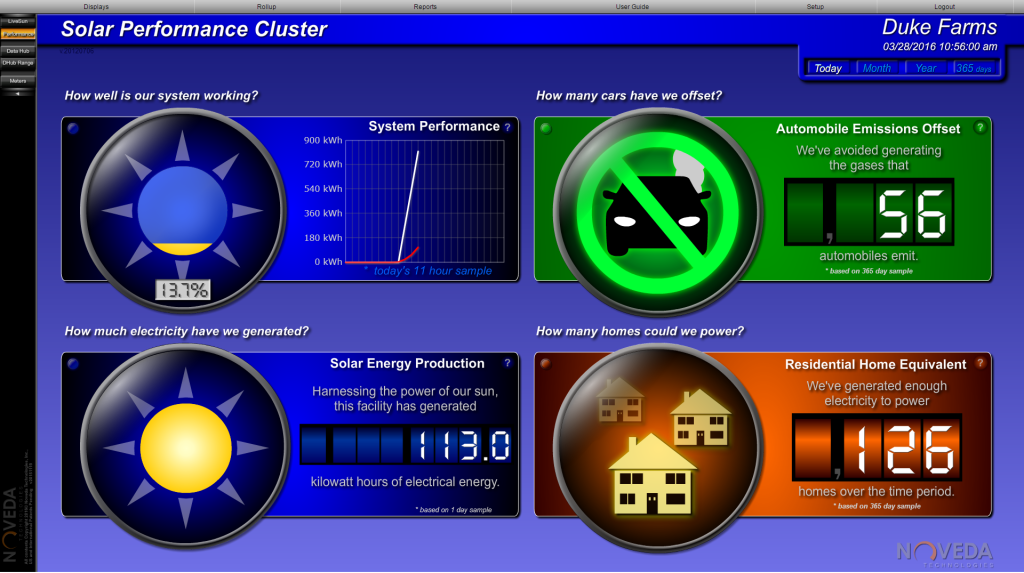
ජෝන් වාගර්:
පද්ධතිය අපගේ උපයෝගිතා බිල්පත්, අපගේ මූල්ය පද්ධතිය සහ අප භාවිතා කරන බලශක්තිය පිළිබඳ තොරතුරු ලබා ගන්නා සියලුම ක්ෂේත්රවලින් තොරතුරු ලබා ගනිමින්, එක් මධ්යගත ස්ථානයක වාර්තා ප්රදර්ශනය කිරීමට සහ නිර්මාණය කිරීමට හැකි වේ. එය අපගේ තිරසාර බලශක්ති මෙහෙයුම්වල සැබෑ නවෝත්පාදනයකි. අපට මෙම එක් වීදුරු කවුළුවක් තිබෙන අතර එහිදී අපට බලා විමසිය හැකිය: අපගේ ඕකිඩ් පරාසය සහ සංරක්ෂණාගාරය කොපමණ ස්වාභාවික වායු ප්රමාණයක් භාවිතා කළාද? අපේ විදුලි වාහනය මේ මාසය තුළ කොපමණ ශක්තියක් වැය කළාද? කොපමණ සූර්ය නිෂ්පාදනයක් තිබුණාද? බොහෝ දත්ත ප්රවාහ එන නිසා, BI විසින් කැම්පස් හරහා ඇති ස්මාර්ට් මීටර වලින් සියලුම තොරතුරු ලබාගෙන ඒ සියල්ල එක තැනකට ගෙන ඒමට හැකි වනු ඇත. ඒ වගේම දැන් අපි කතා කරන විදියටත් ඒක සිද්ධ වෙනවා.
දේශගුණික මෙවලම් කට්ටලය:
එය ඇත්තෙන්ම ඊළඟ මට්ටමට සමානයි.
ජෝන් වාගර්:
අපි ඒ ගැන සතුටු වෙනවා. මොකද හැම ආයතනයකම මේ දත්ත ධාරා තියෙනවා නේද? අපගේ මූල්ය දෙපාර්තමේන්තුව සමඟ හෝ දේශීය උපයෝගිතා සමඟ වැඩ කිරීමෙන්, අපට සිදුවන්නේ කුමක්ද යන්න පිළිබඳ මෙම ඇත්ත වශයෙන්ම පැහැදිලි චිත්රයක් නිර්මාණය කිරීම සඳහා එය එකට එකතු කිරීම ආරම්භ කළ හැකි බව අපි සොයා ගනිමු - වාර්ෂික පදනමින් පමණක් නොව, අඛණ්ඩ පදනමක් මත.
දේශගුණික මෙවලම් කට්ටලය:
ඔබ ඇතුළත් කරනවාද? විෂය පථය 3 ඔබේ විමෝචන විශ්ලේෂණයේදී, හෝ තනිකරම අවධානය යොමු කරන්න විෂය පථය 1 සහ 2?
ජෝන් වාගර්:
අපි විශේෂයෙන් විෂය පථය 3 ගැන බොහෝ කල්පනා කර ඇත්තෙමු, මන්ද ඒවා අපට හැසිරවීමට අපහසු දේවල් වන බැවිනි. අපි අපගේ කාබන් පියසටහන් විශ්ලේෂණය කළ විට, අපගේ අමුත්තන්, ඔවුන් පැමිණියේ කොහෙන්ද සහ ඔවුන්ගේ විමෝචනය දෙස බැලීමට අපි තීරණය කළෙමු. අපි අපේ විමෝචනය සහ අපේ ගොඩබිම මත ස්වභාවික දේශගුණික විසඳුම් හරහා අවශෝෂණය කරන කාබන් දෙස බැලුවහොත්, අපි කාබන් ඍණාත්මක වනු ඇත. නමුත් පසුව අපගේ අමුත්තන්ගෙන් විමෝචනය ගණනය කිරීම - එය අපගේ කාබන් විමෝචනය තරම් ජලයෙන් එය පුපුරවා හැරියේය. ඒ නිසයි අපි ඉදිරියට ගොස් මෙම DC වේගවත් චාජර් සංවර්ධනය කිරීමට ප්රදානයක් ලබා ගත්තේ - එය මාසය අවසන් වන විට ක්රියාත්මක වනු ඇත - සහ නව මට්ටමේ දෙකේ ආරෝපණ පොකුරක්.

ජෝන් වාගර්:
විෂය පථය 3 අපට වඩාත්ම අභියෝගාත්මක ය. විෂය පථය 3 සඳහා ගණන් නොගෙන අපි කාබන් උදාසීන හෝ ශුද්ධ ශුන්ය යැයි කීමට අපට අපවම රවටා ගත හැකි නිසා, අපි එය පැහැදිලිවම ආමන්ත්රණය කළ යුතු බව මම ඇත්ත වශයෙන්ම විශ්වාස කරමි. කෙසේ වෙතත්, ඔබ විෂය පථය 3 ඇමතීමට පටන් ගත් විට, එය ඔබගේ ඉදිරිදර්ශනය පුළුල් කරයි. සහ ඔබ විසින් ගත යුතු ක්රියාමාර්ග - DC වේගවත් චාජරයක් තැනීම හෝ අපගේ පාරිසරික අධ්යාපන වැඩසටහන් දෙස බැලීම සහ කාබන් ඍණාත්මක ක්රියා ප්රවර්ධනය කිරීම වැනි. එබැවින්, නැවතත්, මම සිතන්නේ මෙම පුළුල් ආකාරයේ කාබන් පියසටහන් විශ්ලේෂණය සමඟින්, විෂය පථය 3 ආමන්ත්රණය කරන අතරම එය ගැටළුවක් බව පැහැදිලි වන අතරම අප සියල්ලන්ම අපගේ කාබන් සහ බලශක්ති පද්ධති දෙස බැලිය යුතුය. විෂය පථය 1 සහ විෂය පථය 2 - ඔබ විමෝචනය කරන දෙයට බලපෑම් අංකයක් තැබීම තරමක් පහසු වන අතර කාලයත් සමඟ එය අඩු කිරීම දෙස බලයි. විෂය පථය 1 සමඟින්, පොසිල-ඉන්ධන අනුව, ඔබ වෙබ් අඩවියේ දැවෙන්නේ එය පමණි. ඉන්පසු Scope 2 සමඟින්, එය ඔබගේ බලශක්ති ජාලය සහ ඔබ ජාලයෙන් ඇද ගන්නා විදුලිය දෙස බලයි. ඒ දේවල් ගොඩක් ප්රමාණාත්මකයි. නමුත් විෂය පථය 3 වඩා ගුණාත්මක ය, මන්ද දෝෂ ඇත; ඔබ යමක් දෙවරක් ගණන් කරන්නේදැයි ඔබ නොදනී. සමස්ත ජීවන චක්රය විශ්ලේෂණය ඉතා සංකීර්ණයි.
දේශගුණික මෙවලම් කට්ටලය:
ඔබ ඔබේ විෂය පථය 3 විශ්ලේෂණය සමඟ කටයුතු කිරීමට පටන් ගෙන ඇත්තේ කෙසේද?
ජෝන් වාගර්:
අපි සමඟ සහයෝගයෙන් කටයුතු කරන රට්ගර්ස් විශ්ව විද්යාලයේ පර්යේෂකයෙක් සිටී - ඇය ජීවන චක්ර කාබන් පියසටහන් විශ්ලේෂණයක් සම්පූර්ණ කිරීමට ක්රියා කරයි, සහ ඇගේ විශේෂත්වය වන්නේ විෂය පථය 3. එය වසර අවසානය වන විට අපට තිබිය යුතුය. එවිට අපි එය ආමන්ත්රණය කරන්නේ කෙසේද, අප එය සන්නිවේදනය කරන්නේ කෙසේද යන්න සොයා බැලිය යුතුය. නිසැකව ම අපට කළ නොහැකි හෝ ආමන්ත්රණය කළ නොහැකි දේවල් තිබේ - උදාහරණයක් ලෙස, ඇමේසන් වෙතින් පැකේජ ක්රියාකාරීව ලබා ගැනීම නතර කළහොත් මිස. ඒත් එතකොට අපිට කරන්න පුළුවන් දේවල් තියෙනවා. කෙසේ වෙතත්, මෙය සිදු කිරීමේදී සහ විමෝචනය ගැන වඩාත් පුළුල් ලෙස සිතීමේදී අපගේ සිතුවිලි බොහෝ පරිණාමය වී ඇත. අවාසනාවකට එහි තේරුම Duke Farms ඉක්මනින් කාබන් ඍණ ලෙස නොපෙන්වයි. දළ කාබන් විමෝචනය සම්බන්ධයෙන් ගත් කල, අපට අවසානයේ ශුද්ධ ඍණ විය හැකිය. නමුත් මෙම වෙබ් අඩවියට අදාළ දළ කාබන් විමෝචනය සහ අපගේ සියලුම වෙබ් අඩවි වලට අදාළ දළ හරිතාගාර වායු විමෝචනය පිළිබඳව අවධානය යොමු කළ යුතුය.
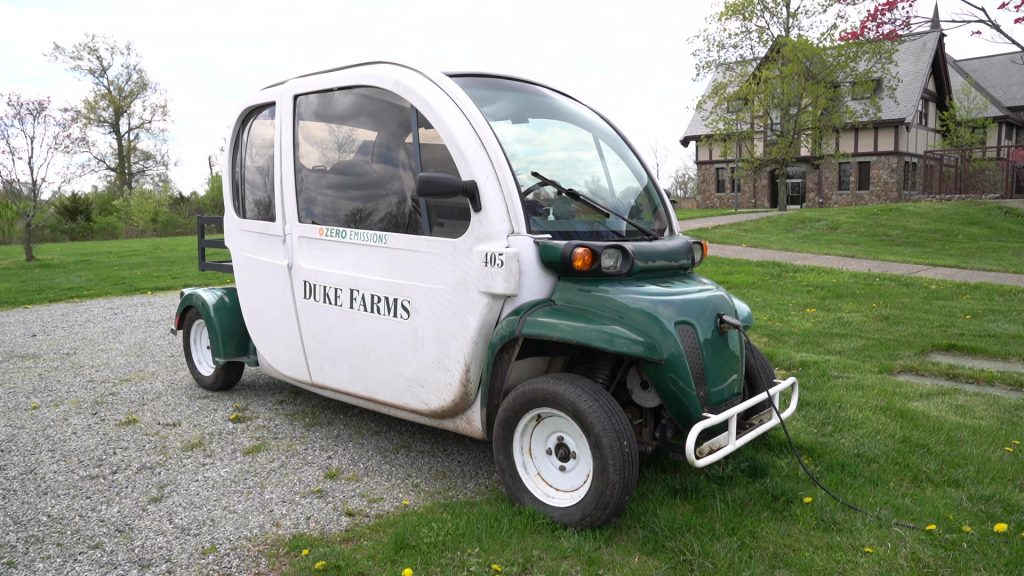
දේශගුණික මෙවලම් කට්ටලය:
ඔබේ උපාය මාර්ග සඳහා ඔබට පූර්ණ ආයතනික සහාය තිබේද?
ජෝන් වාගර්:
අපි Catalyst Initiative ලෙස හඳුන්වන දේ අප සතුව ඇත. ඩොරිස් ඩියුක් පදනම තුළ අපි තුන් දෙනෙක් මේ ගැන බොහෝ දේ කතා කරන අතර එය සංවිධානය තුළ ඉහළ නංවයි. ඒ අපගේ විධායක අධ්යක්ෂ මාග්රට් වෝල්ඩොක් සහ අපගේ පහසුකම් සහ තාක්ෂණ කළමනාකරු ජිම් හැන්සන් ය; අපි ඒ ගැන වැඩිපුරම සිතමින් සිටි අයයි. කෙසේ වෙතත්, සමහර උද්භිද උද්යාන සහ අනෙකුත් ආයතන මෙන් නොව, අපගේ මෙහෙවර තිරසාරත්වය වේ. ඉතින්, වැඩි තල්ලුවක් නැහැ. පිරිසිදු බලශක්තිය ඉක්මනින් ක්රියාත්මක කිරීමට සහ වේගවත් කිරීමට ඇති බාධක හඳුනා ගැනීමට අපි සමාන ප්රමාණයේ ආයතන සමඟ හවුල්කාරිත්වයන් ද ගොඩනඟමු. සූර්යයා වඩා ඉක්මනින් සිදු වන බව සහතික කර ගැනීමට අවසර දීමෙන් අපට වෙනස් ආකාරයකින් කළ හැක්කේ කුමක්ද? නැතහොත් බැටරි ගබඩා කිරීම සහ ඔරොත්තු දීමේ හැකියාව. හවුල්කරුවන්ට සහ අධ්යාපන ආයතනවලට අපගේ ප්රවේශය පුළුල් කළ හැකි අතර බලශක්ති සංක්රාන්තිය සිදුවන වේගයට බලපෑම් කිරීමට උපකාර කළ හැකිය.
දේශගුණික මෙවලම් කට්ටලය:
ඩියුක් ෆාම්ස් හි ඉලක්කය අනෙකුත් විශාල ආයතන සඳහා - විශාල අක්කර ප්රමාණයක් ඇති පුද්ගලයින් සඳහා ප්රදර්ශන මණ්ඩපයක් බවට පත්වීම සහ දේශගුණික තිරසාර අවකාශයේ හොඳම භාවිතයන් අනුගමනය කරන්නේ කෙසේද යන්න සඳහා මාර්ගෝපදේශකයක් වීමද?
ජෝන් වාගර්:
පිරිසිදු බලශක්ති ත්වරණයට බලපෑම් කිරීම සඳහා අපට වේදිකාවක් තිබේ. ඇත්ත වශයෙන්ම, අපි මෙහි සෑම දෙයක්ම කරන්නේ නැහැ. උදාහරණයක් ලෙස අපට මුහුදු වෙරළේ සුළං නැත. නමුත් මම හිතන්නේ අපි භූමියේ කරන දේ සංවාදයට බලපෑම් කිරීමට අපට මේසයේ සැබෑ ආසනයක් ලබා දෙයි. මෙය ඉදිරියට ගෙන යාමේ සහ අපගේ පහසුකම වේදිකාවක් ලෙස භාවිතා කිරීමේ ප්රමුඛයන් ලෙස මම අපි දකිමි - අපට මෙහි තාක්ෂණය ඇති නිසා සහ අපි එය පිළිවෙලට එකට එකතු කරන නිසා පමණක් නොව, අපට රැස්වීමට සහ ගෙන ඒමට හොඳ ස්ථානයක් තිබේ. මිනිස්සු එකතුවෙලා මේ ප්රශ්න ගැන කතා කරනවා. අපගේ සාමූහික අත්දැකීම් පදනමක් ලෙස භාවිතා කරමින් උත්තෝලනයක් ඇති කිරීමට සහ අවසානයේ ජාතික මට්ටමින් මිනිසුන් එකට ගෙන ඒමට හැකි වේ. අවම වශයෙන් මෙහි ප්රාදේශීය වශයෙන් නිව් ජර්සි හි නායකත්ව තනතුරක් ලබා ගැනීමට උත්සාහ කරන බව අපි ඇත්ත වශයෙන්ම දකිමු. මොකද මේ ප්රශ්න ගොඩක් දේශීය ඒවා නේද?
දේශගුණික මෙවලම් කට්ටලය:
ඩියුක් ෆාම්ස් හි ඔබ කරන ඉඩම් ප්රතිජනන ක්රම ගැන මට කියන්න පුළුවන්ද?
ජෝන් වාගර්:
ඉතින්, අපට අක්කර 2,700 කට වඩා ටිකක් ඇති අතර, අපි බොහෝ ප්රතිසංස්කරණය කර ඇත්තෙමු. එයින් වැඩි ප්රමාණයක් නුසුදුසු ප්රදේශ වල කෘෂිකාර්මික ඉඩම් විය - එබැවින් ගංවතුර තැනිතලා වසර දෙකකට වරක් හෝ ගංවතුරට ලක් විය. අපි කරලා තියෙන්නේ, අපි ෆෙඩරල් ආන්ඩුව එක්ක වැඩ කරනවා NRCS, සහ ගංවතුර තැනිතලාව දිගේ අක්කර 500 ක් පමණ ලිහිල් කිරීම් - රරිටන් ගඟ - පසුව එය නැවත ස්වදේශික ගංගා වාසස්ථාන වෙත ප්රතිසංස්කරණය කරමින් නව්ය අරමුදල් ප්රභවයන් ලෙස හැඳින්වේ. ස්වභාවික සම්පත් හානි පියවීම. 1700 ගණන්වල මුල් භාගයේ ලන්දේසි ගොවීන් පවා මෙහි සිටි ආකාරය - ඉරිඟු සහ සෝයා වූ දේ නැවත තිබූ දේ බවට පරිවර්තනය කිරීම සඳහා අපි බාහිර මුදල් ගෙනාවා. එය ඇත්තෙන්ම වැදගත් වන්නේ රරිටන් ගඟ පොදු ජල සැපයුම වන බැවිනි. එය බොහෝ ගංවතුරට ගොදුරු වේ. එබැවින් එම ප්රතිසංස්කරණය ගඟේ වේගය අඩු කිරීමට උපකාරී වනු ඇත.
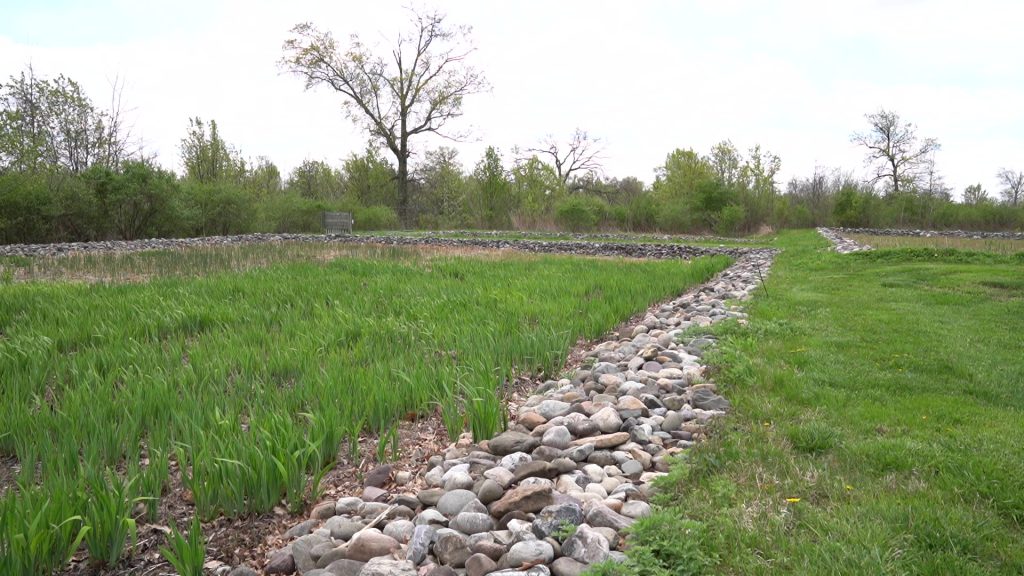
ජෝන් වාගර්:
අපි කළමනාකරණය කරන කෘෂිකාර්මික ක්ෂේත්ර ද අප සතුව ඇත - අපි තණබිම් කුරුල්ලන් සහ තණබිම් තණබිම් ප්රතිසංස්කරණ කටයුතු සඳහා කළමනාකරණය කරන කෘෂි විද්යා ගොවිතැන් වැඩසටහනක ගව පට්ටියක් ඇත. අපි ආක්රමණශීලී විශේෂ පාලනය කරන උඩරට වනාන්තර තියෙනවා. අප සතුව ක්රියාකාරී මුවන් කළමනාකරණ වැඩසටහනක් ඇත, ආක්රමණශීලී පාලනය, ස්වදේශිකයන් සහ ස්වභාවික පරිසර පද්ධති ක්රියාවලීන් ප්රවර්ධනය කිරීම කෙරෙහි අවධානය යොමු කර ඇත. ඉතින් මේ ප්රතිසංස්කරණ ව්යාපෘති ඔක්කොම අවුරුදු ගාණක් තිස්සේ කරගෙන යන ඒවා. වසර තුනකට පෙර, අපි රට්ගර්ස් විශ්ව විද්යාලය සමඟ පර්යේෂණ ව්යාපෘතියක් ආරම්භ කළ අතර, අප විසින් සිදු කරන සියලුම ප්රතිසංස්කරණ ව්යාපෘති සඳහා කාබන් පදනම කුමක්දැයි සොයා ගැනීමට අපට උපකාර කිරීමට අපි ඔවුන්ට මුදල් ගෙවමු. මුන් කරලා තියෙන්නේ හැම පස්වලම පාංශු කාබන්, ගස්වල කාබන්, මේවයින් කාබන් ප්රවාහ දිහා බලනවා. Eddy-Covariance Flux Towers.
දේශගුණික මෙවලම් කට්ටලය:
ඒ ගැන වැඩි විස්තර අපට කියන්න.
ජෝන් වාගර්:
මේවා පරිසර පද්ධතිවල වසර පුරා කාබන් ප්රවාහ ඔබට පෙන්වන කුළුණු වේ. ගස්වල වර්ධනය මනින යුෂ ප්රවාහ මීටර කිහිපයක් මෙන්ම අප සතුව ඇත. ඉතින්, අපි මේ ඉඩම කොපමණ කාබන් ප්රමාණයක් වෙන් කරනවාද යන්න පිළිබඳව නිවැරදි විද්යාත්මක මිනුම් රාශියක් කරමින් සිටිමු. ඉන්පසු කළමනාකරණ භාවිතයන් සහ එය බලපාන්නේ කෙසේද යන්න සොයා බැලීම. උදාහරණයක් ලෙස, පසෙහි ජෛව අඟුරු එකතු කිරීම පාංශු කාබන් සහ අනුක්රමණය වැඩි කරන්නේ කෙසේද යන්න හෝ නැවත වන වගා කිරීම හෝ දේශීය ශාක හා පඳුරු සිටුවීම වැනි ඉඩම් කළමනාකරණ පිළිවෙත්වල වෙනස්වීම් කාබන් අවශෝෂණය වෙනස් කරන්නේ කෙසේදැයි අපි සොයා බලමු. එය මූලික මට්ටමට වඩා වැඩි ය - අපි මෙම පසෙහි කාබන් අන්තර්ගතය වැඩි කිරීමට හැකි වන්නේ කෙසේදැයි බැලීමට සැබෑ ඉඩම් කළමනාකරණ ශිල්පීය ක්රම සිදු කරන අත්හදා බැලීම් සිදු කරමින් සිටිමු.
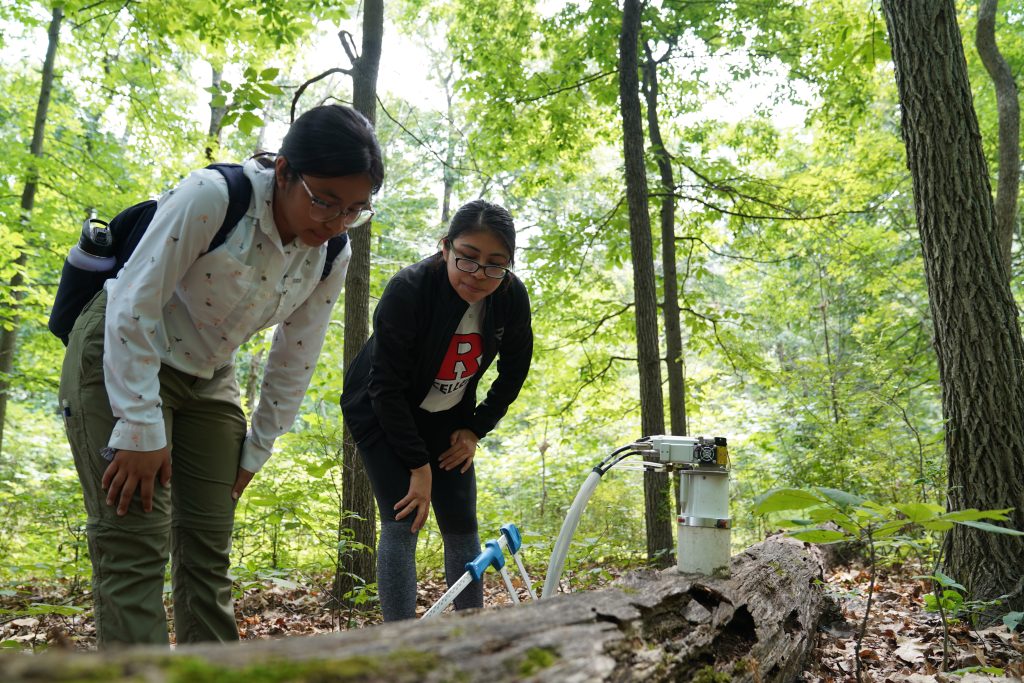
ජෝන් වාගර්:
කෙසේ වෙතත්, ඔබ සෑම තැනකම දුවන්නේ මෙම අදහසයි, 'ස්වභාවධර්ම ධනාත්මක' යනු කාබන් ගැන පමණක් නොවේ. අපගේ කෘෂිකාර්මික ක්ෂේත්රවල ප්රාන්තයේ වඳවීමේ තර්ජනයට ලක්ව ඇති හොඳම තෘණ බිම් වාසස්ථාන කිහිපයක් අපට තිබේ - බොහෝ දුරට දේශීය උණුසුම් සමයේ තණකොළ. තවද, අපගේ අදහස නම්, ගවයින්ට එය පවත්වා ගැනීමට උපකාර කළ හැකි බවයි. ඇත්ත වශයෙන්ම, අපි සතුන් නැවත ගොඩබිමට දමන විට, පසෙහි කාබන් අනුපාතය ඉහළ යන බව අපට පෙනී යයි. එළදෙනුන් පැහැදිලිවම මීතේන් විශාල ප්රමාණයක් විමෝචනය කළත්, එය ඇත්ත වශයෙන්ම පාංශු සෞඛ්යයට සහ ගුණාත්මක භාවයට සැබෑ ධනාත්මක බලපෑමක් ඇති කරයි. ගණන් බැලීම සිත්ගන්නාසුළු වනු ඇත. පෝෂණ චක්රවල හැටියට මේ ඉඩම් අතීතයට වඩා හොඳට සලකන නිසා මීතේන් ගොඩක් හිලව් වෙනවා කියලා අපි හිතනවා.
දැන්, අපි කාබන් සීක්වෙස්ට්රේෂන් සඳහා උපරිම කිරීමට නම්, අපි ඒ සියල්ල ගස්වල සිටුවමු. හරිද? නමුත් ගස් වැවීම තෘණ බිම් වාසස්ථාන විනාශ කරයි. මෙය ස්වභාව ධර්මයේ ධනාත්මක අදහස වෙත අපව නැවත ගෙන එයි. මේවා ඉඩම් හෝ දේපළ කළමනාකරණය කිරීමේදී අප සැමට කළ යුතු ගනුදෙනු වේ. ඩියුක් ෆාම්ස්හිදී, අපි කියන්නේ අපට තණබිම් වාසස්ථාන ඇති නිසාත්, අපට ගවයන් සිටින නිසාත්, අපට කුරුල්ලන් සිටින නිසාත් අපි කාබන් අවශෝෂණය උපරිම කිරීමට යන්නේ නැත. සහ වඳවීමේ තර්ජනයට ලක්ව ඇති පක්ෂීන් සැබවින්ම අපගේ සංරක්ෂණ ඉලක්කයයි. ඉතින්, අපි උත්සාහ කරන්නේ පසට කාබන් එකතු කිරීමේ අමතර වාසියක් ඇති කපන කපනවට වඩා මෙම වාසස්ථාන කළමනාකරණය කිරීමට ගවයින් යොදා ගැනීමට ය. එය ඉතා සිසිල් ය කෘෂි පරිසර පද්ධතිය එය තණකොළ සහ කුරුල්ලන් සඳහා වෙනත් ස්ථාන අනුකරණය කළ හැකිය.

දේශගුණික මෙවලම් කට්ටලය:
මම ඩියුක් ෆාම්ස් හි හොඳම භාවිතයන් - විශේෂයෙන් සමඟ - මෙම අවස්ථාව ගැන සිතීමට කැමතියි භ්රමණ තෘණ. කාර්මික ගොවීන් හෝ පරිසර විද්යාත්මක නොවන ගොවිතැන් ක්රමවල යෙදෙන අය සමඟ සම්බන්ධ වීම සහ ගවයන් සහ ඉඩම් යන දෙකම කළමනාකරණය කිරීම සඳහා භ්රමණ තෘණ කිරීම ඉතා ප්රයෝජනවත් ක්රියාවක් බව පෙන්වීම ගැන කිසියම් සංවාදයක් ඇති වී තිබේද?
ජෝන් වාගර්:
අපි දැන් ප්රදේශය වටා සමාන අදහස් ඇති ගොවීන් කිහිප දෙනෙකු සමඟ වැඩ කරමින් සිටිමු - පවුල් ගොවිපලවල් උරුම කරගත් සහ සම්මත පේළි බෝග කිරීමට අකමැති තරුණ ගොවීන් විශාල ප්රමාණයක් පැමිණෙමින් සිටිති. සැබෑ අවස්ථාවක් ඇත, නමුත් සමහර බාධක ද ඇත. උදාහරණයක් ලෙස, අපට මෙහි ඝාතකාගාරයක් සහ මස් කපන්නන් සඳහා ඩියුක් ෆාම්ස් හි යටිතල පහසුකම් නොමැත. අපිට හැම දෙයක්ම පෙන්සිල්වේනියාවට ගෙනියන්න වෙනවා, ඒක වියදම් අධිකයි. ඉතින්, අපේ සියලුම ගවයන් එහි සකස් කර, පසුව කැෆේ මෙහෙයුම් සඳහා අපගේ ගොවිපල වෙත ආපසු පැමිණේ. අපි එයින් විශාල ප්රමාණයක් ආහාර බැංකුවලට පරිත්යාග කරමින් සිටිමු, එය ධාන්ය මත නිම කරන ලද සුපිරි උසස් තත්ත්වයේ, තණකොළවලින් පෝෂණය කළ හරක් මස් පිරිනැමීමට අපට හැකි නිසා එය විශිෂ්ටයි. එය තෘණ-පෝෂිත හරක් මස් සඳහා විශේෂ නිම කරන්නෙකු විසින් අවසන් කරනු ඇත - ඉන්පසු Duke Farms ඔවුන් සමඟ නිෂ්පාදන සම-අලෙවි කිරීම සඳහා කටයුතු කරයි. මෙම විශාල සන්දර්භය තුළ එය දෙස බලා කර්මාන්තයට ද උපකාර කිරීම අදහසයි. එවිට අපට මෙම ව්යාපාරය ආරම්භ කිරීමට සහ හොඳම භාවිතයන් වෙනුවෙන් පෙනී සිටීමට බලාපොරොත්තු විය හැක. ඒ වගේම මම හිතන්නේ අපි තණකොළවලින් පෝෂණය වන සහ පක්ෂි හිතකාමී දේශීය හරක් මස් සඳහා විශාල වෙළඳපොළක්, විශේෂයෙන්ම නිව් ජර්සි හි ඇති බව - සහ එයට සැබෑ වාරිකයක් ඉල්ලා සිටිය හැකි බව අපි අවබෝධ කරගෙන සිටිමු.
තණකොළ සහ කුරුල්ලන්ගේ වාසස්ථාන සමඟ එයයි. ඔබට තණබිම් වල යම් යම් තත්වයන් පවත්වා ගැනීමට අවශ්ය වන අතර, ඇතැම් තෘණ උසින් යුක්ත වන අතර, බොහෝ හරක් මස් ගව මෙහෙයුම්වලට වඩා වෙනස් වන ගවයින් නිතර නිතර ගමන් කිරීමට ඔබට අවශ්ය වේ. ඒ වගේම මම හිතන්නේ අපි Duke Farms හිදී පෙන්වන්නේ ඔබට ඒ දෙකම කළ හැකි අතර, කුරුල්ලන්ට අවශ්ය සහ එළදෙනුන්ට අවශ්ය වන වඩාත් ඉහළ ඵලදායි තණබිම් ලබා ගත හැකි බවයි. ඉතින්, අපි මේ කරන්නේ දැඩි ලෙස කළමනාකරණය කරන ලද තෘණ පද්ධතියයි. අපි කාලයක් තිස්සේ එය කරමින් සිටි අතර, අපි දැන් ව්යාපාර ආකෘතිය පිරිපහදු කරමින් සිටිමු. නමුත් නැවතත්, එය මෙම වෙළඳාම් වලින් එකකි. ඔබ ඇත්තටම කාබන් විමෝචනය උපරිම කිරීමට උත්සාහ කරන්නේ නම් ඔබට ගවයින් නොසිටිනු ඇත.
දේශගුණික මෙවලම් කට්ටලය:
මේ ගැන තර්කයක් ගොඩ නැගිය යුතු දැයි මට සිතේ. විභවය, ඔව්, ඔබ ඔබේ ක්ෂේත්ර තුළ දේශීයව කාබන් අනුක්රමණය උපරිම කරන්නේ නැත - එසේ වුවද, ගවයන් සහ තණබිම් නිසි ලෙස කළමනාකරණය කරන්නේ කෙසේද යන්න පිළිබඳ ප්රචාරණයක් ලබා දීමෙන්, සමහර විට ඔබ වැඩි බලපෑමක් ඇති කරයි. ගව ගොවීන් 100ක් සමඟ සම්බන්ධ වීමට ඔබට අභිප්රාය තිබුණේ නම් සහ මෙම ගොවිපල 100 ඔවුන්ගේ දේපල මත භ්රමණ තෘණ භාවිතා කිරීමට තීරණය කළේ නම්, හදිසියේම ඔබට ඔබේ එක් ප්රදේශයකට වඩා විශාල කාබන් විමෝචන බලපෑමක් ඇති වේ.
ජෝන් වාගර්:
නියත වශයෙන්ම. මිනිසුන් මස් කන එක නවත්වන්නේ නැති බව අපි තේරුම් ගත යුතුයි. හරිද? කෙසේ වෙතත්, එම මස් ඇති කිරීමට වඩා තිරසාර ක්රම තිබේ නම්, අපට පෙන්නුම් කළ හැකි වඩා සෞඛ්ය සම්පන්න සහ මානුෂීය ක්රම තිබේ නම්, එය බොහෝ විට හොඳ දෙයක් විය හැකිය. ඔබ එය නිවැරදිව කරන්නේ නම්, තණබිම් වාසස්ථාන සහ පස වැඩිදියුණු කිරීම සඳහා ඔබට ගවයින් භාවිතා කළ හැකිය. ඉතින් ඒක තමයි ස්වභාවධර්මයේ ධනාත්මක පැත්ත. අපි ටොන් ගණනක් ප්රතිසංස්කරණය කරනවා, කෘෂි විද්යාව ගොඩක් කරනවා, නමුත් හැම දෙයක්ම කාබන් සීක්වෙස්ට්රේෂන් උපරිම කිරීම සඳහා වෙන්නේ නැහැ. සමහර විට මිනිසුන්ට මග හැරෙන ඉතා හොඳ කරුණක් එය යැයි මම සිතමි. අපට ඕනෑවට වඩා අදහස් වලින් ඔතා ගත හැකිය: දේශගුණය, කාබන්, අනුක්රමණය… නමුත් එවිට අපට සොබාදහමේ කොටස මග හැරේ. ඩියුක් ෆාම්ස් හි අපගේ ප්රතිලාභීන් මූලික වශයෙන් පැවසුවේ මෙම දේපල වනජීවී සහ කෘෂිකර්මාන්තයේ ප්රයෝජනය සඳහා භාවිතා කළ යුතු බවයි. එබැවින්, අපි ඩොරිස් ඩියුක් පැවසූ දේ ගෙන එය නූතන සන්දර්භය තුළ අර්ථ නිරූපණය කිරීමට උත්සාහ කරමු. අපි ගොඩ බැස්සේ මෙන්න මෙහෙමයි. ස්වභාවය ධනාත්මක සහ කාබන් සෘණ වීම.
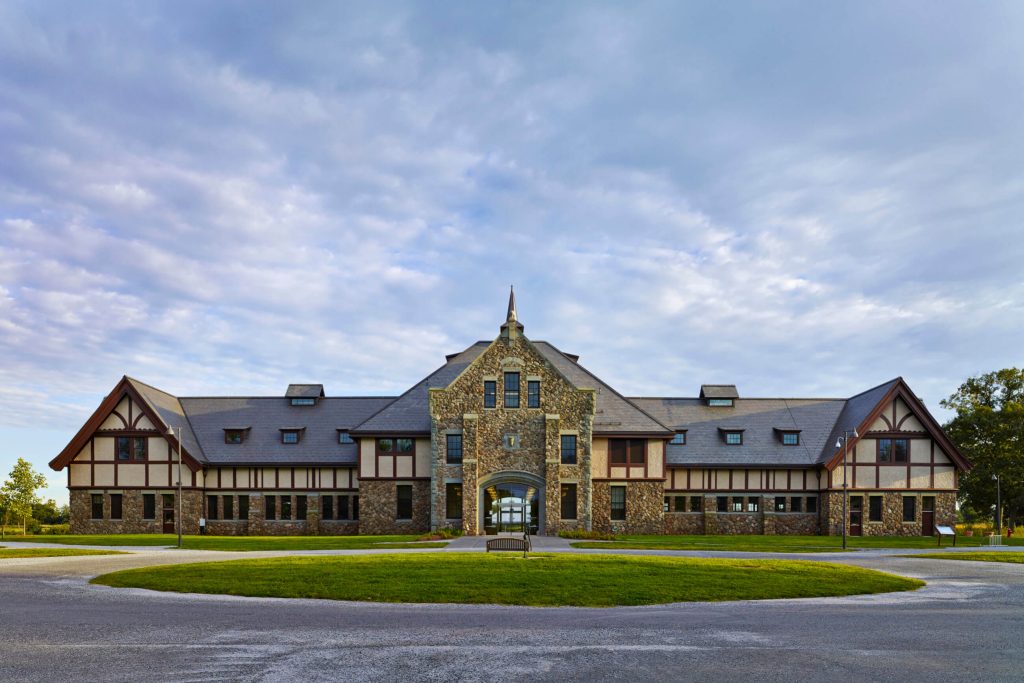
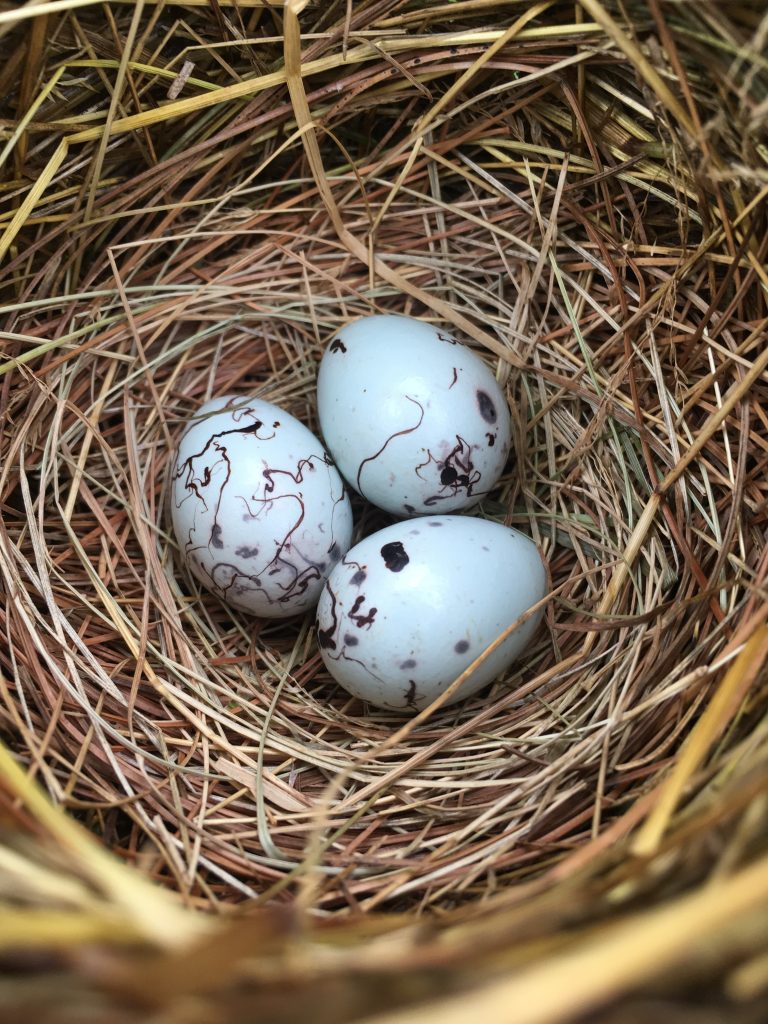
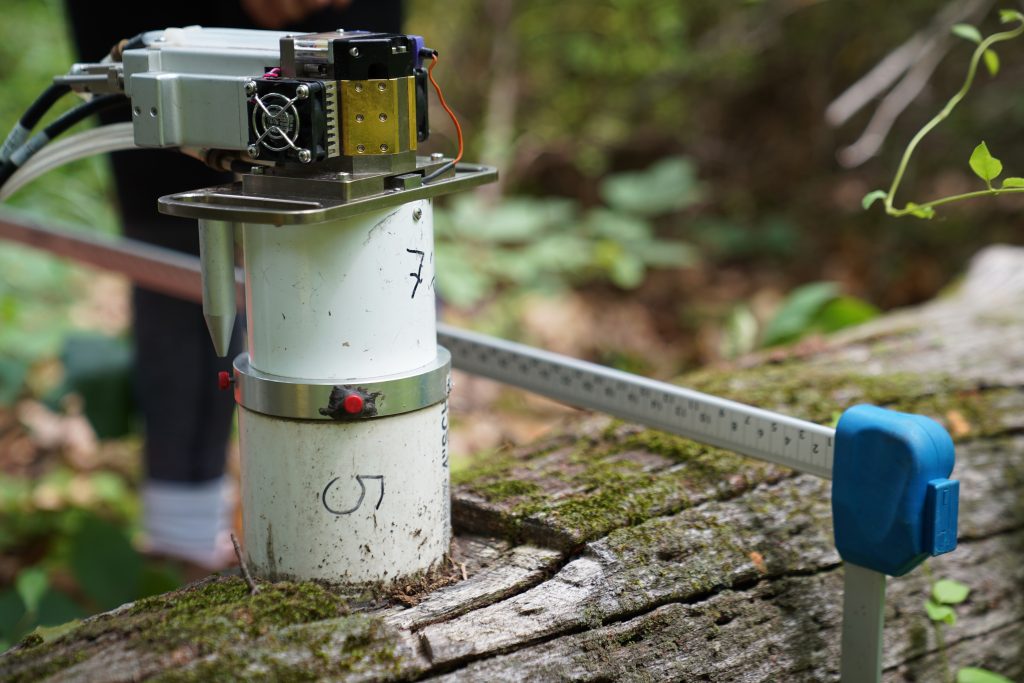
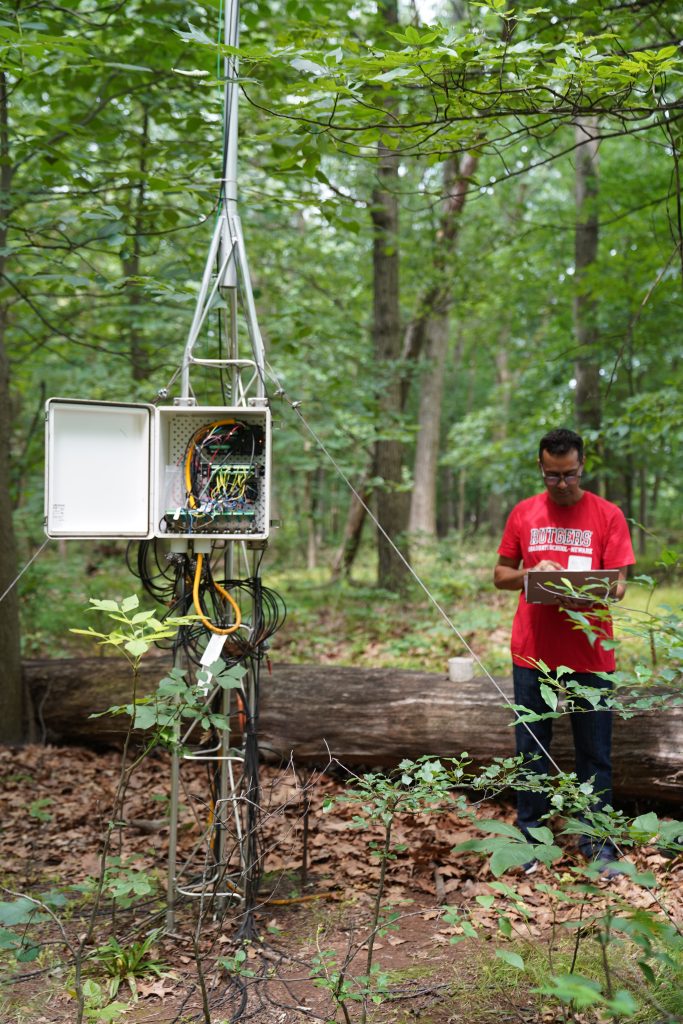
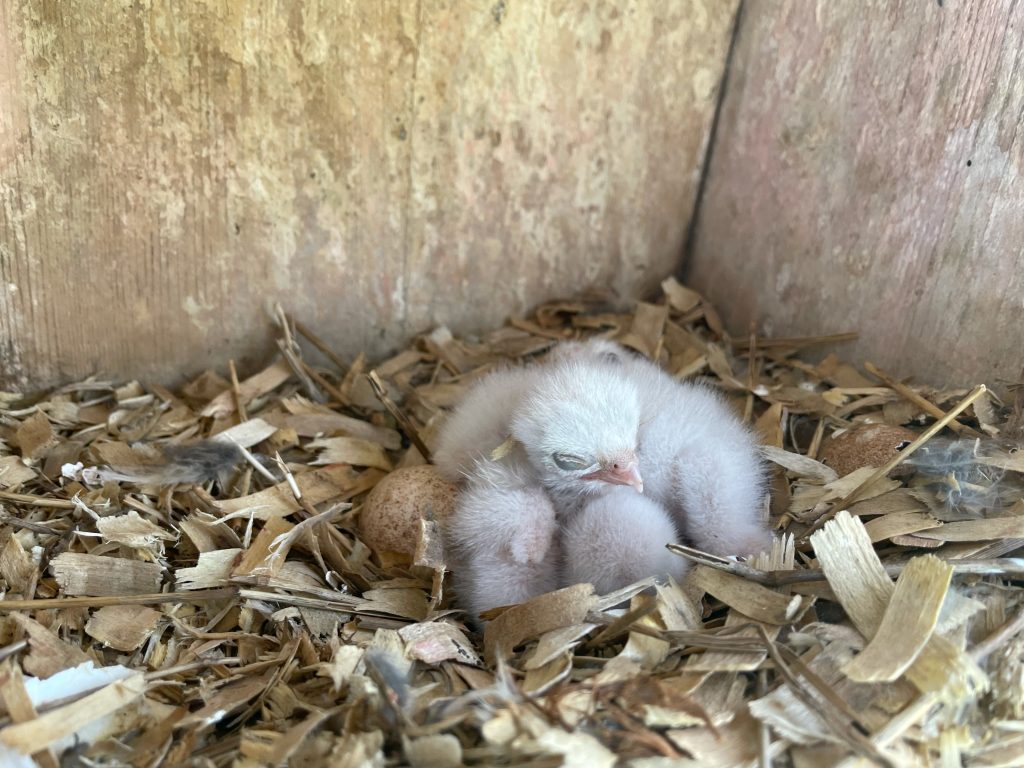


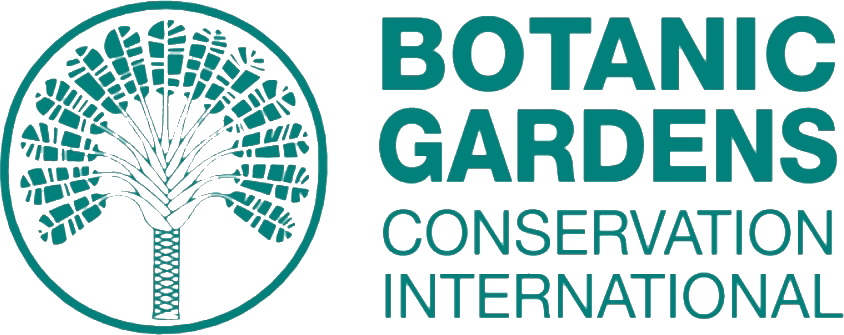



නවතම ප්රතිචාර